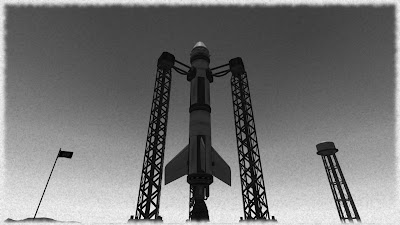Celestia III, the second probe of it's type, made history when it successfully passed behind the Mun and sent back images of the side that never faces Kerbin. After Celestia II, which is now in a permanent orbit around our star, failed to return to Kerbin after acquiring the images, the staff at the KSC needed to get it right this time.
'What a relief,' Gene Kerman said in a later inteview. 'We needed to hit the mark this time. Had we screwed up again... well, I'd hate to think where we'd be.'
Celestia III, which is an identical copy to Celestia II, took several images over forty-minutes as it passed 62km above the surface of the Mun's far side. The best images released to the public are shown below. After the images were captured, Mission Control had to wait for the probe to return within two-million kilometers of Kerbin so it could successfully transmit the images back. A short while later, the probe burned up in Kerbin's atmosphere.
The most striking feature is the huge impact crater with a very distinct canyon to the crater's north. It seems that this side of the Mun is perhaps much more mountainous than the side that faces Kerbin. Even Celestia II's broken image shows the enormous crater, although no one wanted to speculate at the time due to the poor quality. The crater is not the largest of the Great Craters, but it does appears to have the largest canyon running into it. Although the quality of the images does limit the amount scientific data that can be extracted, staff say there is yet much studying to be done.
Celestia II's image for comparison. It is now clear that the speculated large crater was apparent even in this image.
The booster, which trailed the probe, could not be detected once the probe passed behind the Mun and is thought to have crashed somewhere on the far side.
The next step is rumored to be an attempted landing.













































